Life in Faslane: 50 years of nuclear submarines on the Clyde
- Published
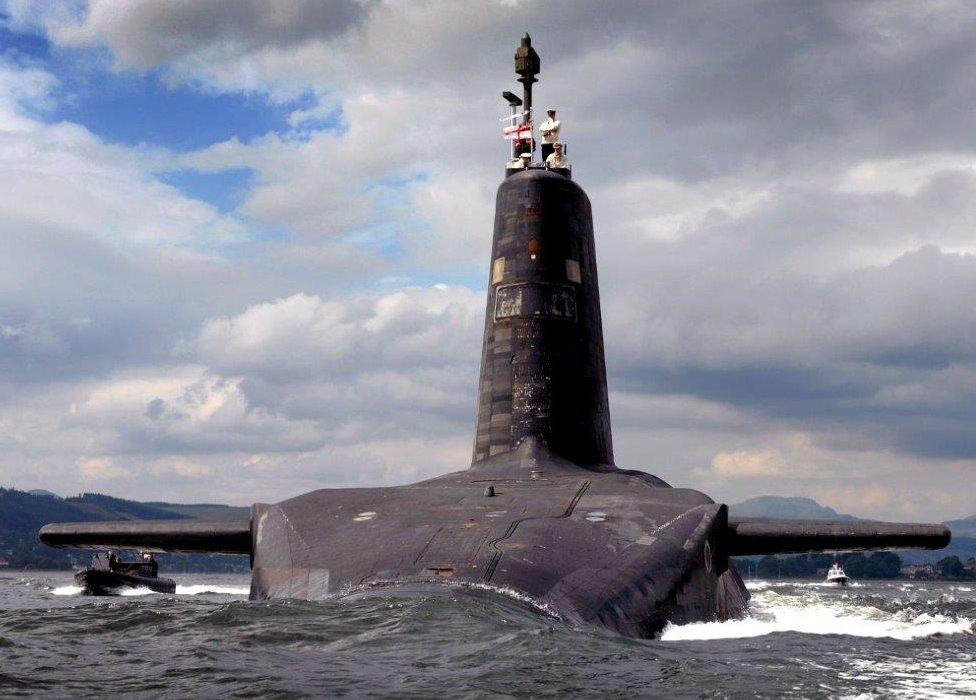
HMS Vanguard conducted the first operational Trident patrol
For 50 years, Faslane has been one of the most controversial sites in Britain - home to the UK's nuclear weapons system.
At the height of the Cold War in the early 1960s, Britain decided it needed its own response to the threat of Soviet nuclear attack.
After considering land-based and air-based missiles, the British government eventually committed to the American-made Polaris system, carried by submarines which could avoid detection beneath the waves.

The Royal Yacht Britannia, with HRH The Queen Mother on board, arrives at Faslane on 10 May 1968 to open the naval base
Faslane sits on the northern shore of Gare Loch, a sheltered sea loch that opens into the River Clyde, less than 30 miles from Glasgow.
It was chosen as the base and for almost half a century there has been a British submarine armed with nuclear missiles somewhere at sea, ready to respond.
From the very beginning, the presence of the nuclear weapons on Scotland's west coast has attracted protesters.
Detractors claim the missiles would never be used - and if they were it would lead to nuclear annihilation.
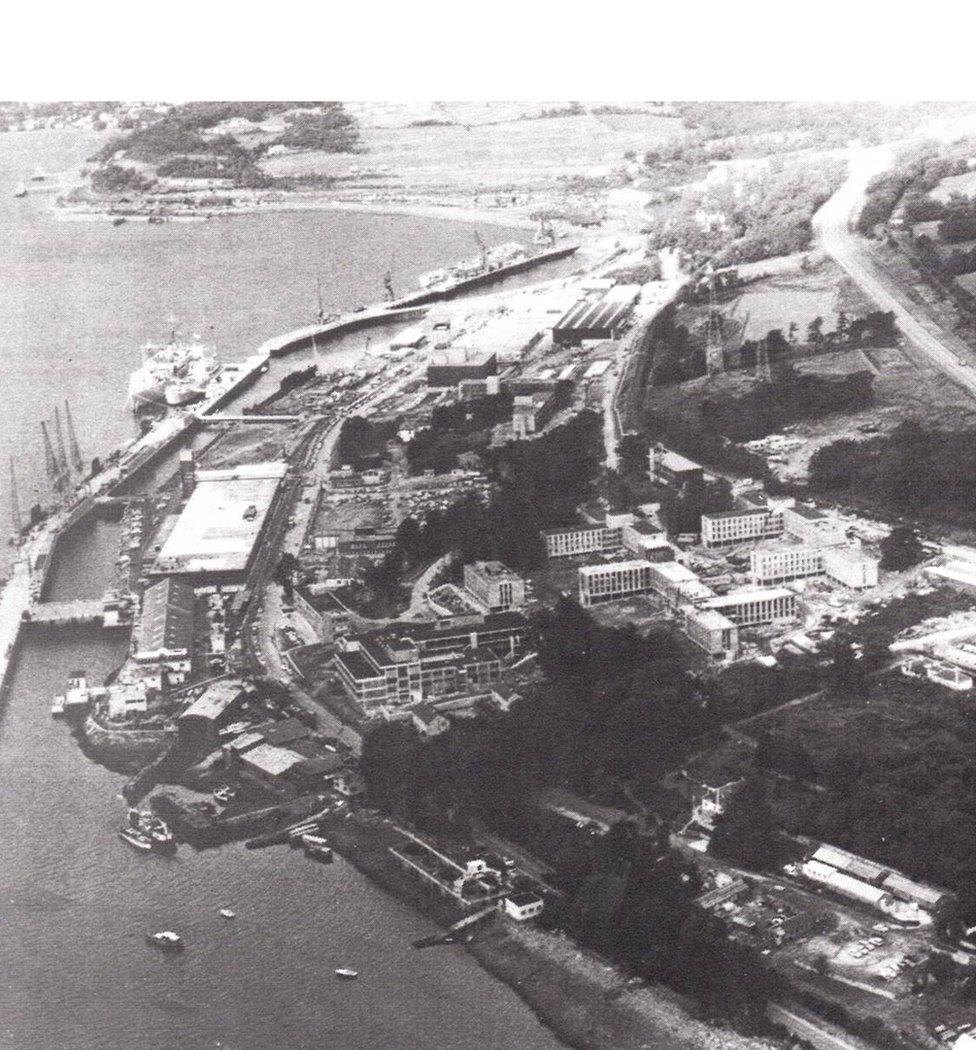
The naval base in the 1960s was a very different place


HM Naval Base Clyde today - the largest military site in Scotland and its only Royal Navy base
Those in favour said the missile system was a "deterrent", claiming it bolstered the UK's standing in the world and would make aggressors wary of threatening the UK.
With the end of the Cold War and the receding threat of nuclear attack, questions were raised about the effectiveness of this "deterrent" against emerging threats such as terrorism.
But despite this, the ageing Polaris system was replaced in the mid-1990s and for the past 20 years Trident has been the name that has sparked vigorous debate.
The scrapping of Trident loomed large in the Scottish independence referendum, with the SNP pledging nuclear weapons would have no place in an independent Scotland.
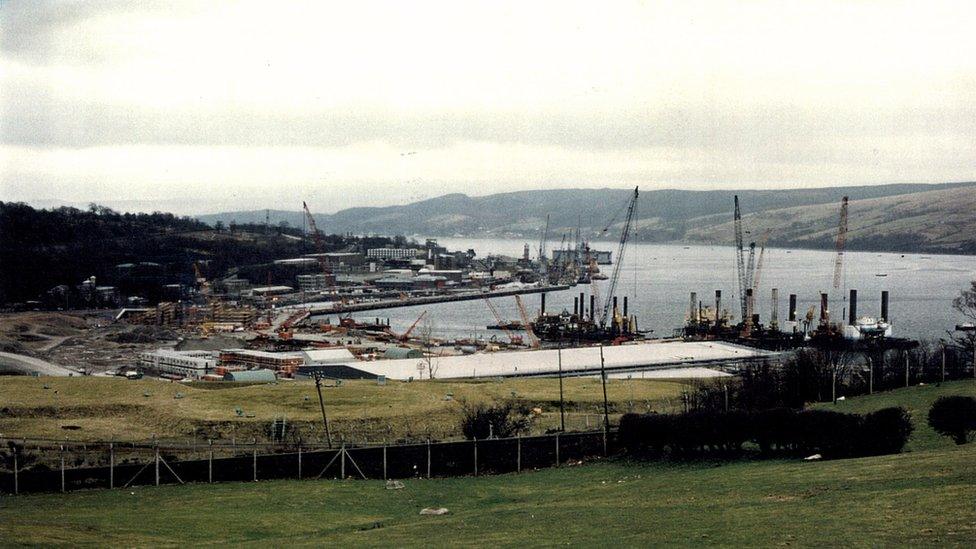
In 1982, the base launched a major construction programme ahead of the transition to the Trident weapons system.
Supporters point out that the base is a major employer and an economic boost for Argyll and the Helensburgh area.
Others claim the enormous cost of the weapons system could be better spent on hospitals and schools.
Despite the constant division over whether the UK should have nuclear weapons, the naval base at Faslane has continued to grow.
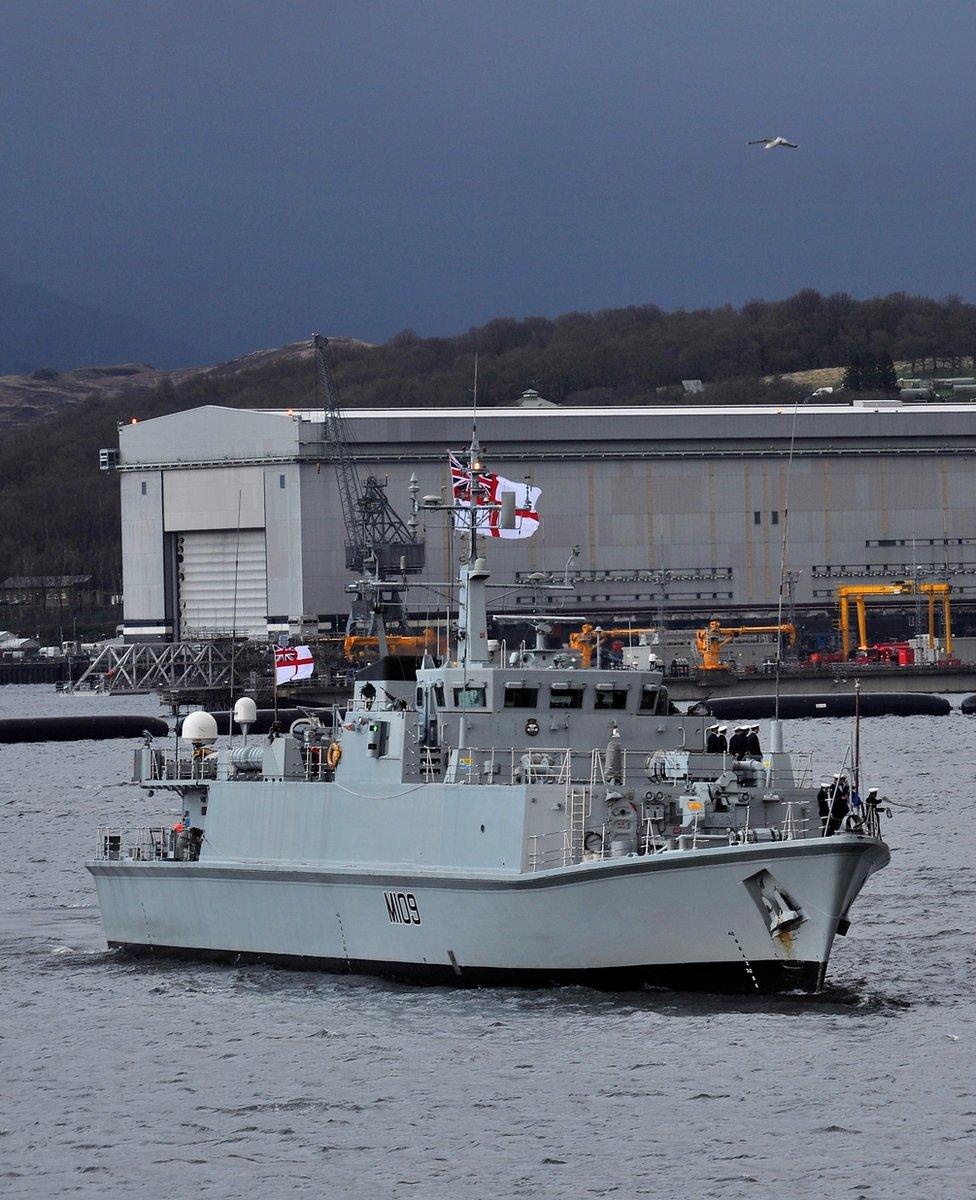
In 1995, mine warfare vessels transferred from Rosyth to their new home at Faslane

The plan is now for it to be home to all the UK's submarine fleet, including seven new Astute class submarines, which are nuclear-powered but launch conventional weapons.
The Royal Navy's association with Faslane and Gare Loch dates back to World War One, well before the nuclear weapons arrived.
During WW2, Faslane acquired large jetties and a railway connection in order to take in transatlantic shipments of troops and supplies.
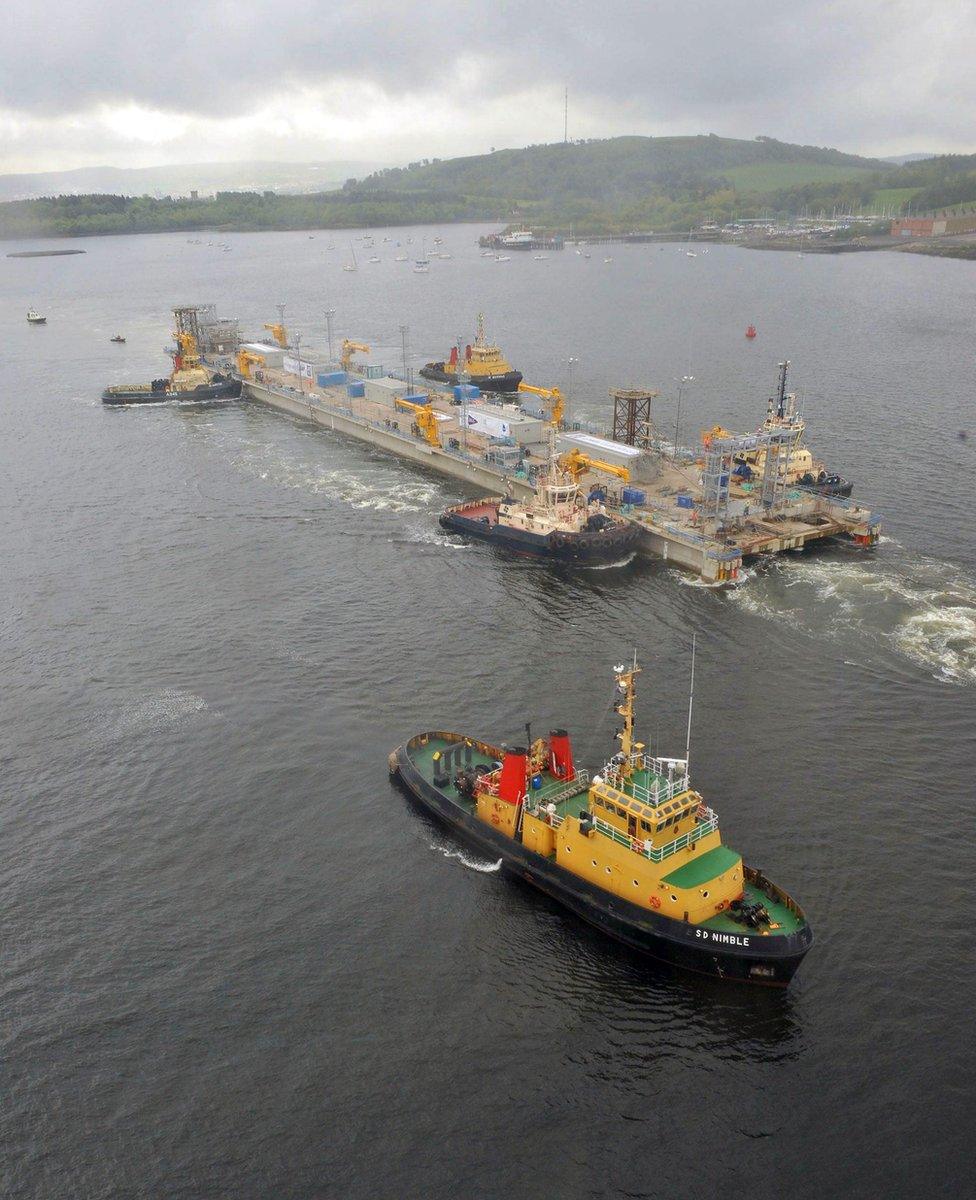
A new floating jetty - the Valiant Jetty - was constructed in 2009 for the new Astute Class submarines

After that it took on the role of shipbreaking but was also used as a base for submarines in the pre-nuclear days.
The decision to use it as a nuclear sub base meant one of the largest building projects the Navy had ever undertaken.
And on 10 May 1968, HMS Neptune, the Clyde Submarine Base, officially came into being when HRH The Queen Mother opened the site.
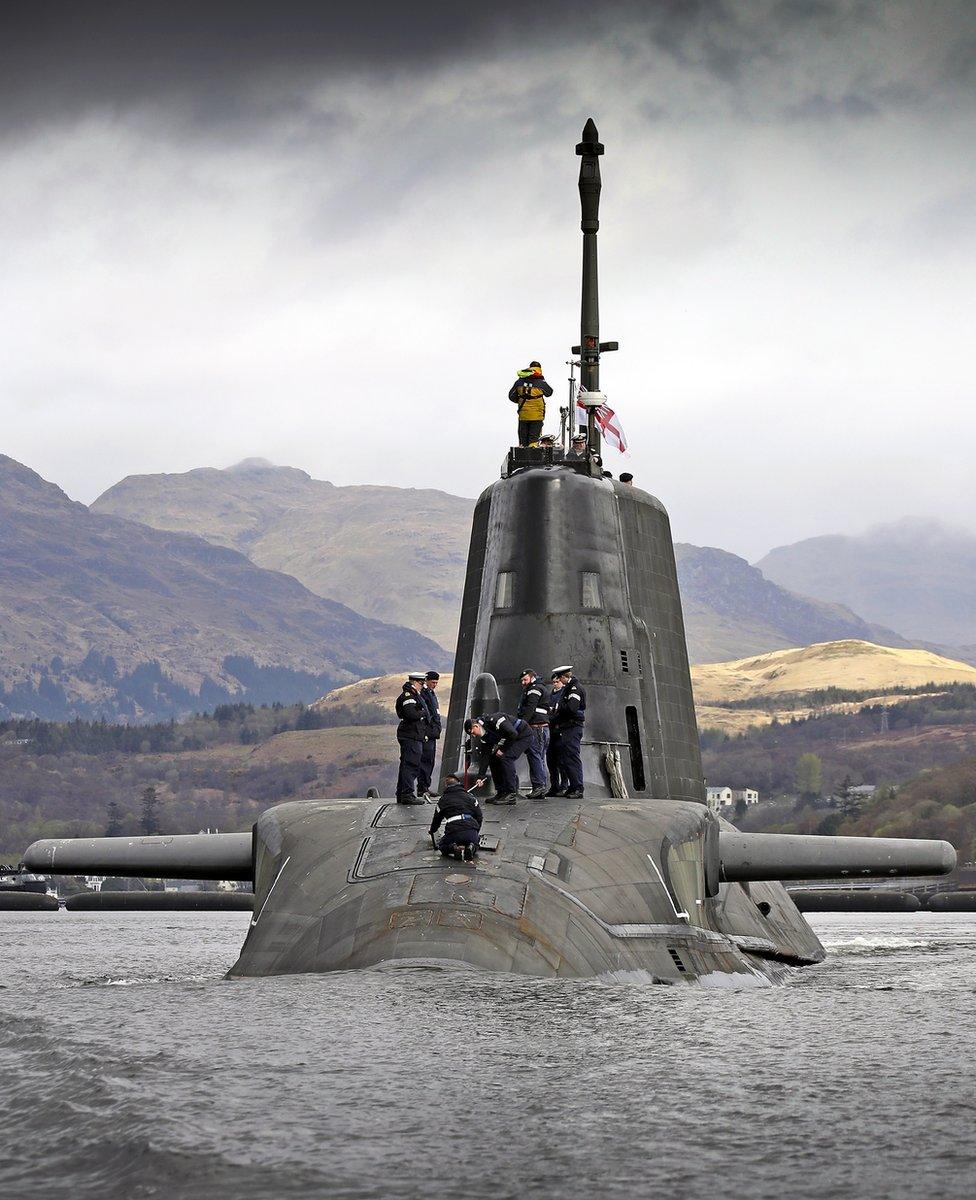
HMS Astute arrived at HMNB Clyde in November 2009. All the UK's submarines will soon be based at Faslane.

Later that year, HMS Resolution conducted the first operational Polaris patrol.
By 1969 the UK had fully committed to Continuous At Sea Deterrence (CASD), though details of the operations were top secret.
In order to ensure that one submarine was always available, the UK had four vessels carrying the Polaris missiles.
As well as HMS Resolution there was also Repulse, Renown, and Revenge.
The decision to place all the UK's nuclear weapons at Faslane met less opposition than the earlier establishment of an American-base at the nearby Holy Loch in 1961.
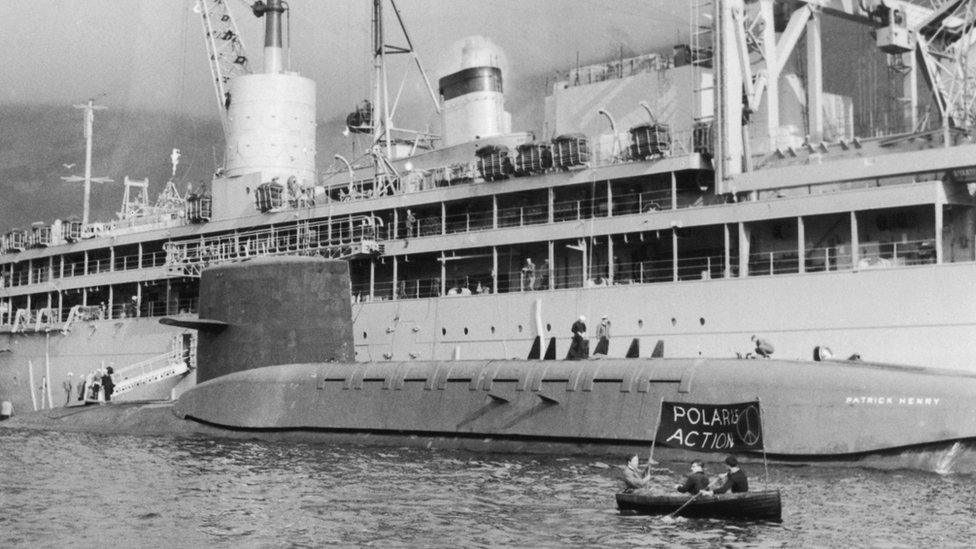
CND protesters row a small craft alongside the US Polaris submarine USS Patrick Henry in Holy Loch on 8 March 1961
The placing of US Polaris nuclear weapons on UK soil met fierce opposition from anti-nuclear campaigners.
The UK government's criteria for using the Clyde base were similar to those of the Americans.
It offered a secluded base that was deep, navigable and offered easy access to the North Atlantic.
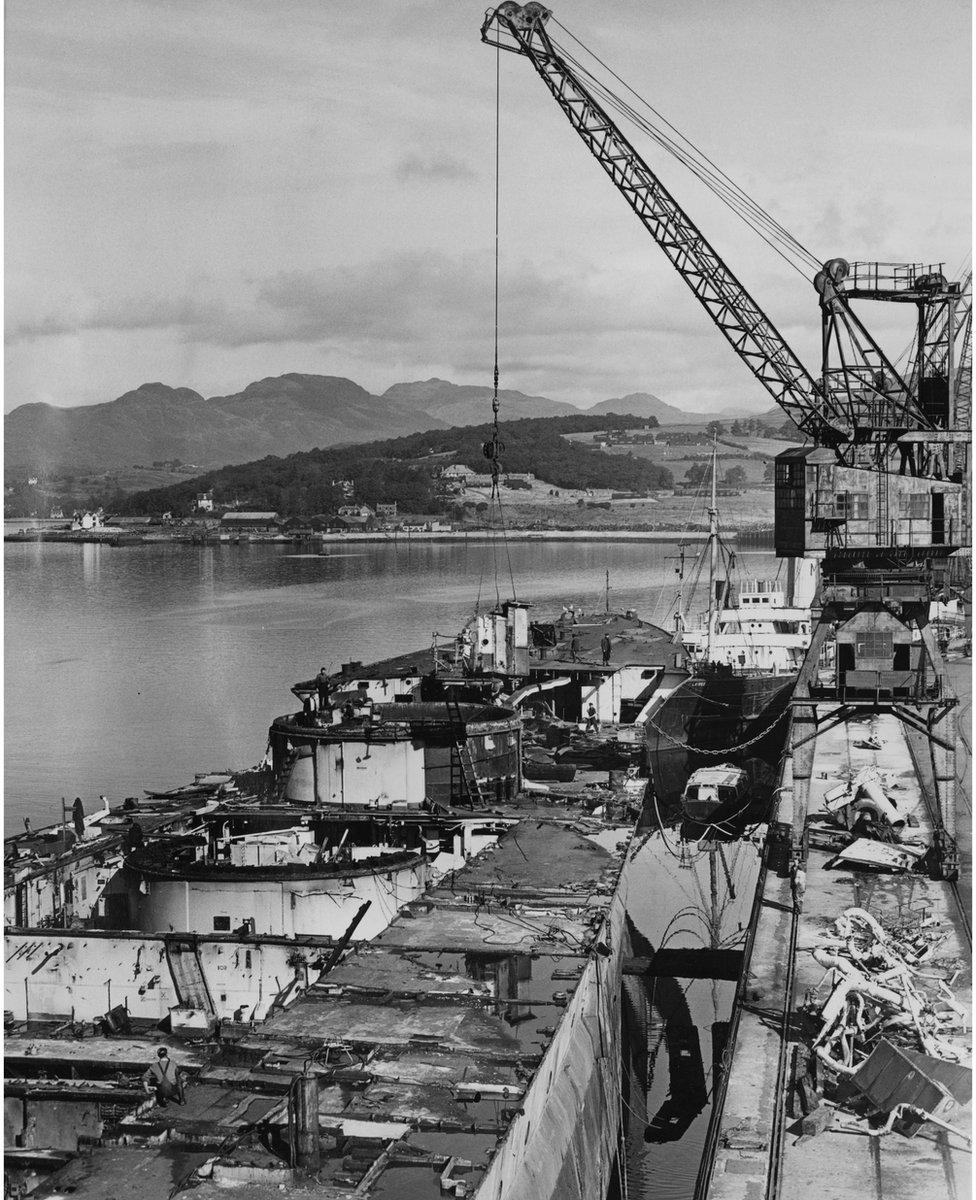
Faslane was used for breaking up ships after the war. This is battlecruiser HMS Renown in 1950

The American base at Holy Loch closed in the early 1990s when the end of the Cold War changed US priorities.
By this time, the UK had already embarked on another huge construction programme at HM Naval Base Clyde in order to carry out the transition from Polaris to the more powerful Trident missiles, which are also American-made.
The massive construction programme created a new ship lift, a power station and a new road to carry warheads nine miles down the glen.
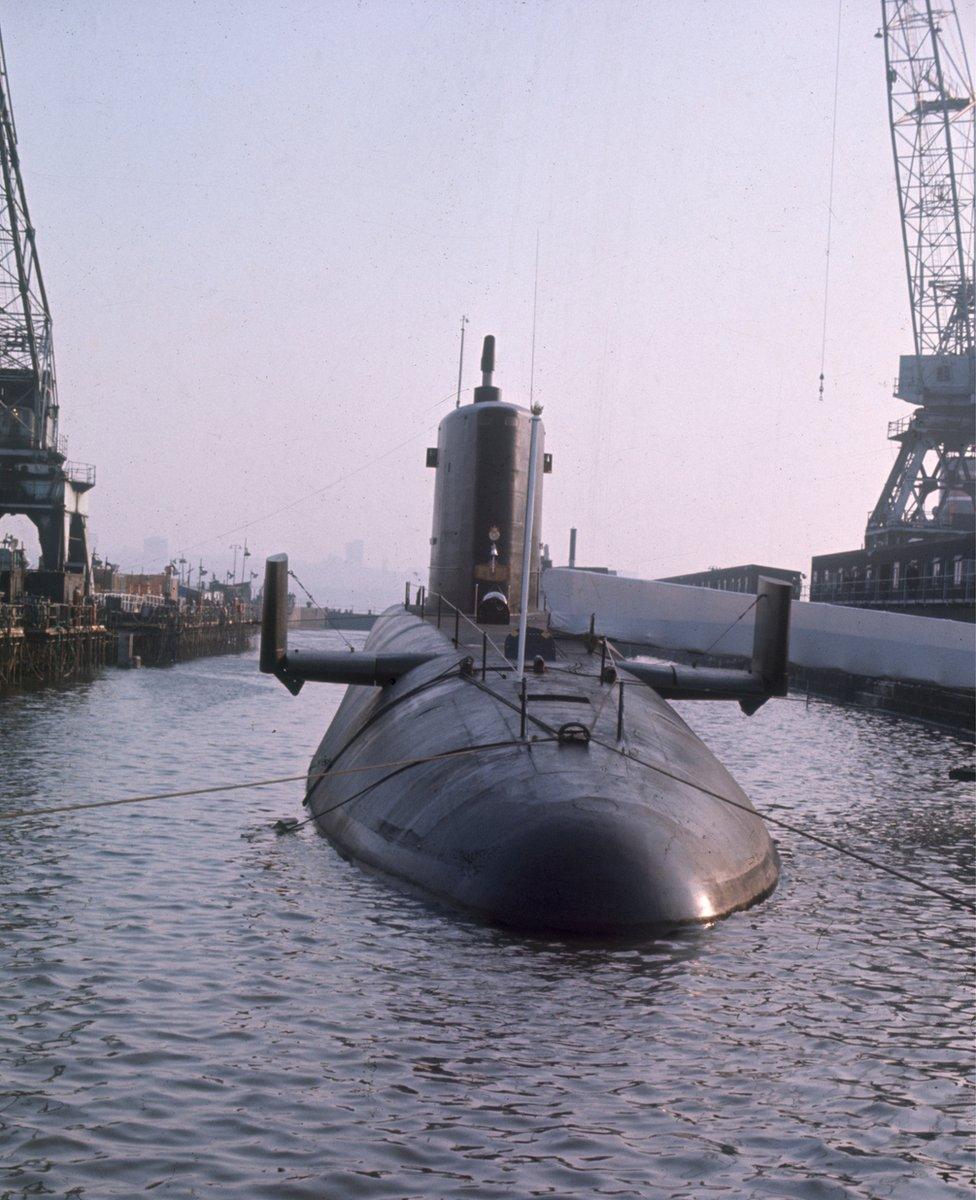
HMS Resolution, the first of the British nuclear powered Polaris boats (SSBNs) in dock

The ship lift is capable of holding a 15,000-tonne submarine out of the water and is designed to withstand earthquakes stronger than the UK has ever experienced.
The first operational Trident patrol was carried out by HMS Vanguard in December 1994.
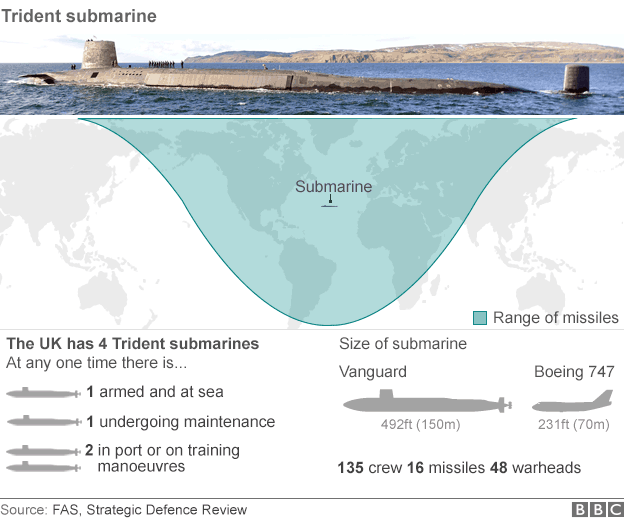

It was later joined in Faslane by three others - Vengeance, Victorious and Vigilant.
The boats are defined as SSBNs - ballistic missile submarines.
This means they are both nuclear-powered (steam is generated by nuclear reactors) and they carry ballistic missiles with nuclear warheads.

Faslane has attracted protests for many years
Each missile carries warheads more powerful than the bombs dropped on Hiroshima during World War Two.
A constant reminder of the discontent many feel at having nuclear weapons on their doorstep is the peace camp that has been situated close to the Faslane site since 1982.
Security at Faslane is always visible and while protests often occur at the main gates, any attempts to get beyond the perimeter are strongly resisted.

Nicola Sturgeon protesting at an anti-nuclear campaign at Faslane in 2004
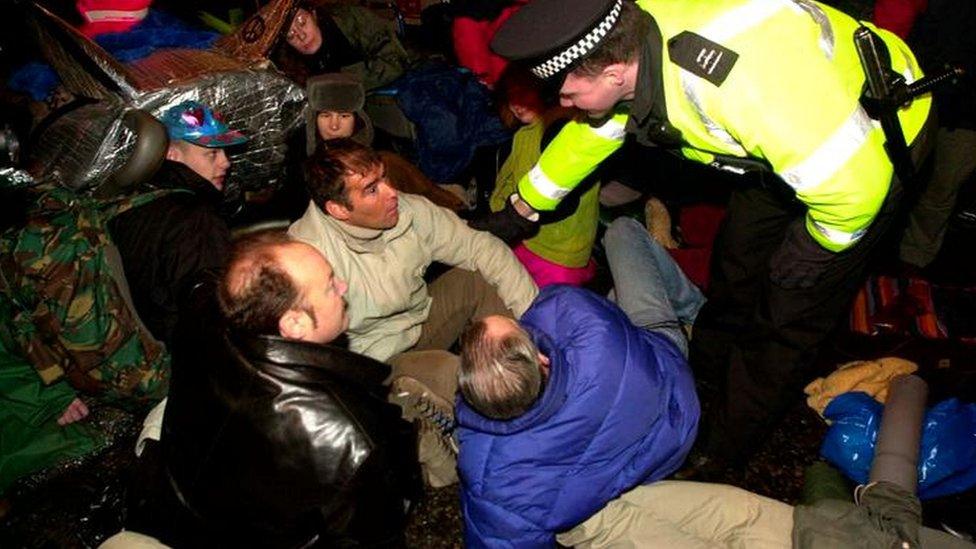
Scottish MSP Tommy Sheridan and MP George Galloway during a protest at Faslane in 2001

Campaigners say the UK should not have nuclear weapons
The Clyde base has continued to grow over the past 20 years and now stretches for almost two miles down the eastern shore of the Gare Loch.
It is the largest military site in Scotland as well as one of the largest single-site employers, with about 6,500 people working there and another 200 nearby at the armaments depot at Coulport, where the warheads are stored.
And despite protests, the future of the site seems to be secure.

The Faslane site has continued to grow over the past 20 years
Two years ago, the House of Commons voted to back the renewal of the UK's Trident nuclear weapons system.
MPs approved the manufacture of four replacement submarines at a current estimated cost of £31bn.
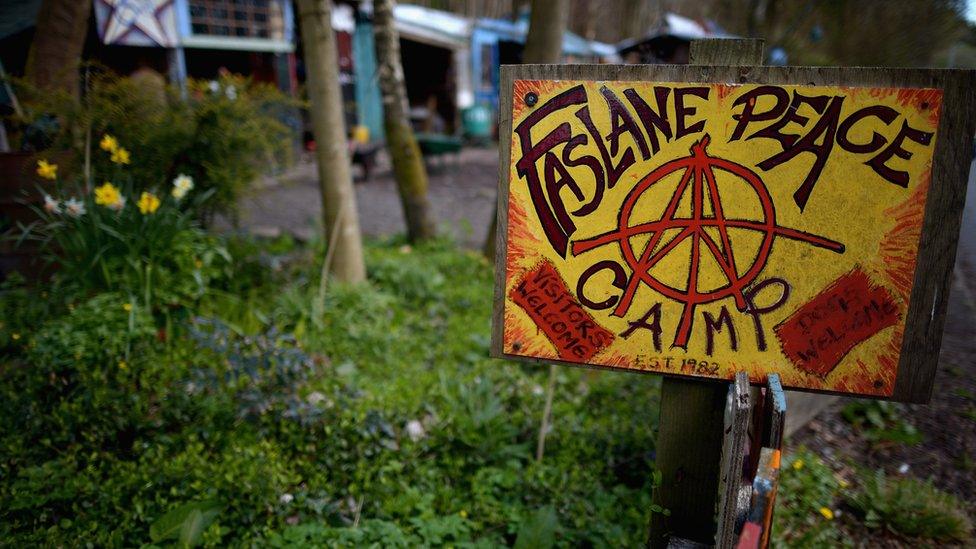
Delivery of the new fleet is not expected until the early 2030s, which postpones the withdrawal of Vanguard submarines at least 10 years beyond their expected operational life.
Critics say the full cost of building, arming, running and repairing four nuclear submarines over 40 years of operational life will be more than £100bn.
The SNP's Stewart Hosie called it an "unthinkable and indefensible sum of money to spend on the renewal of an unwanted and unusable nuclear weapons system".
Yet half a century after it first came into being, HM Naval Base Clyde seems set to carry on for many years to come.